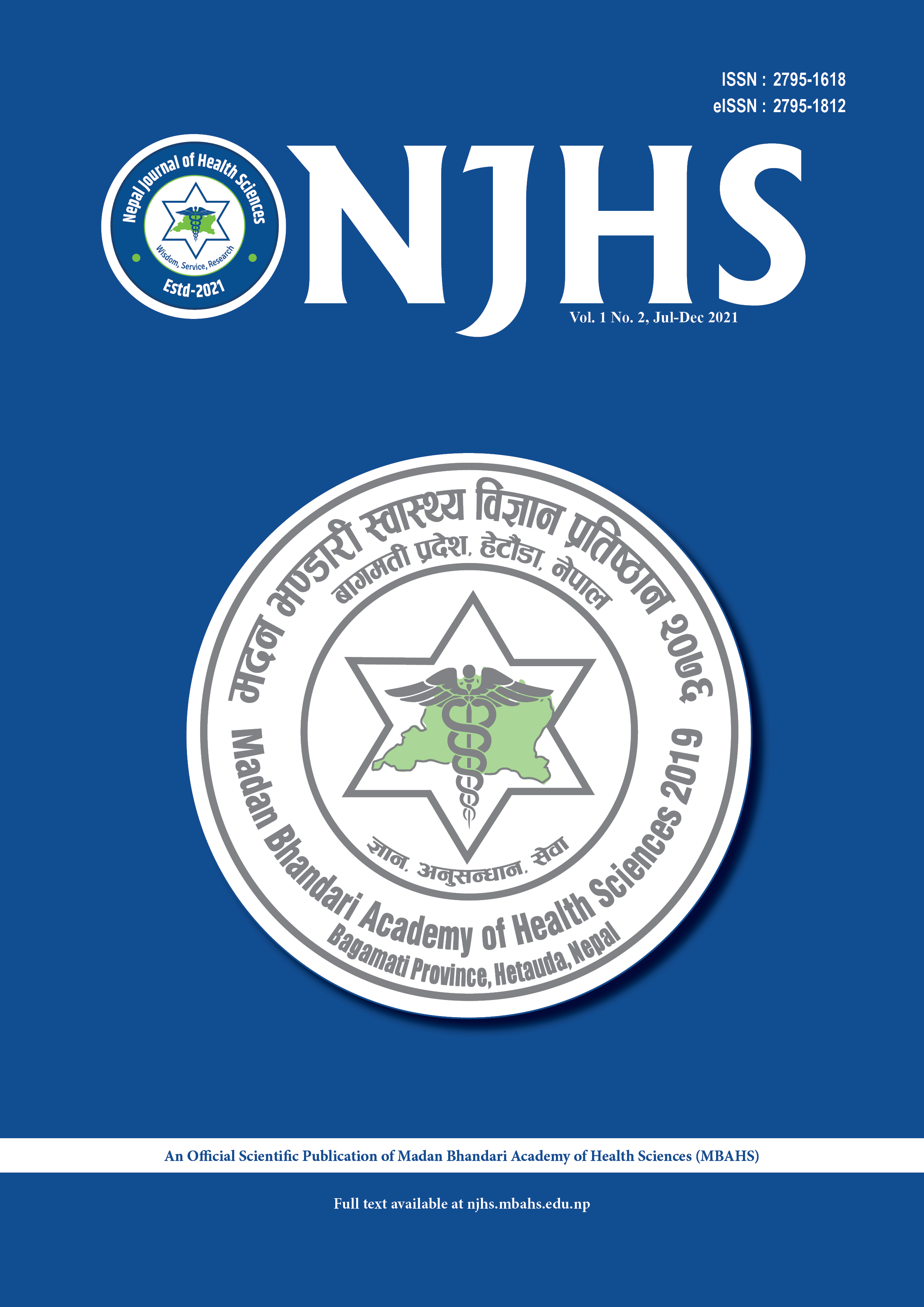Pediatric Otological Disorders: An In-Hospital Study
DOI:
https://doi.org/10.3126/njhs.v1i2.42372Keywords:
Ear, Nose and Throat; otology; pediatric; Prevalence.Abstract
Introduction: Social factors influencing the likelihood of developing pediatric Ear, Nose, and Throat (ENT) disorders include socioeconomic status, the type of family, overcrowding, and access to health care, which are prevalent in developing countries like Nepal. Nepalese populations are not well documented with regards to pediatric ENT disorders.
Objective: The aim of the study was to determine the prevalence of ENT disorders in pediatric patients attending hospitals.
Methods: This is a cross-sectional descriptive study that was conducted at Janaki Medical College, Janakpur between January and September of 2021. Consecutive children from Janaki Medical College between the ages of 6 months and 18 years with otological complaints participated in the study. Afterward, the diagnosis was derived from patients’ OPD cards or by contacting them by phone.
Results: The mean ages of male and female participants were 3.2± 2.7 years old and 4.9 ± 2.6 years respectively. Out of the study participants who complained about otological complaints, the majority (37.45%) had ear wax on their ears, followed by foreign bodies (21.30%) and acute otitis externa (9.2%). Among foreign bodies encountered, rubber (35.48%) was most common, followed by seed (24.19%).
Conclusions: Pediatric ear diseases are very common. In the majority of cases, ear wax and foreign bodies were found. By raising awareness about ear hygiene and disease, we can reduce the problems associated with them.
Keywords: Ear, nose, and throat; otology; pediatric; prevalence.
Downloads

Downloads
Published
How to Cite
Issue
Section
License
Copyright (c) 2021 Dipak Kumar Gupta, Poonam Kumari Shah

This work is licensed under a Creative Commons Attribution 4.0 International License.



